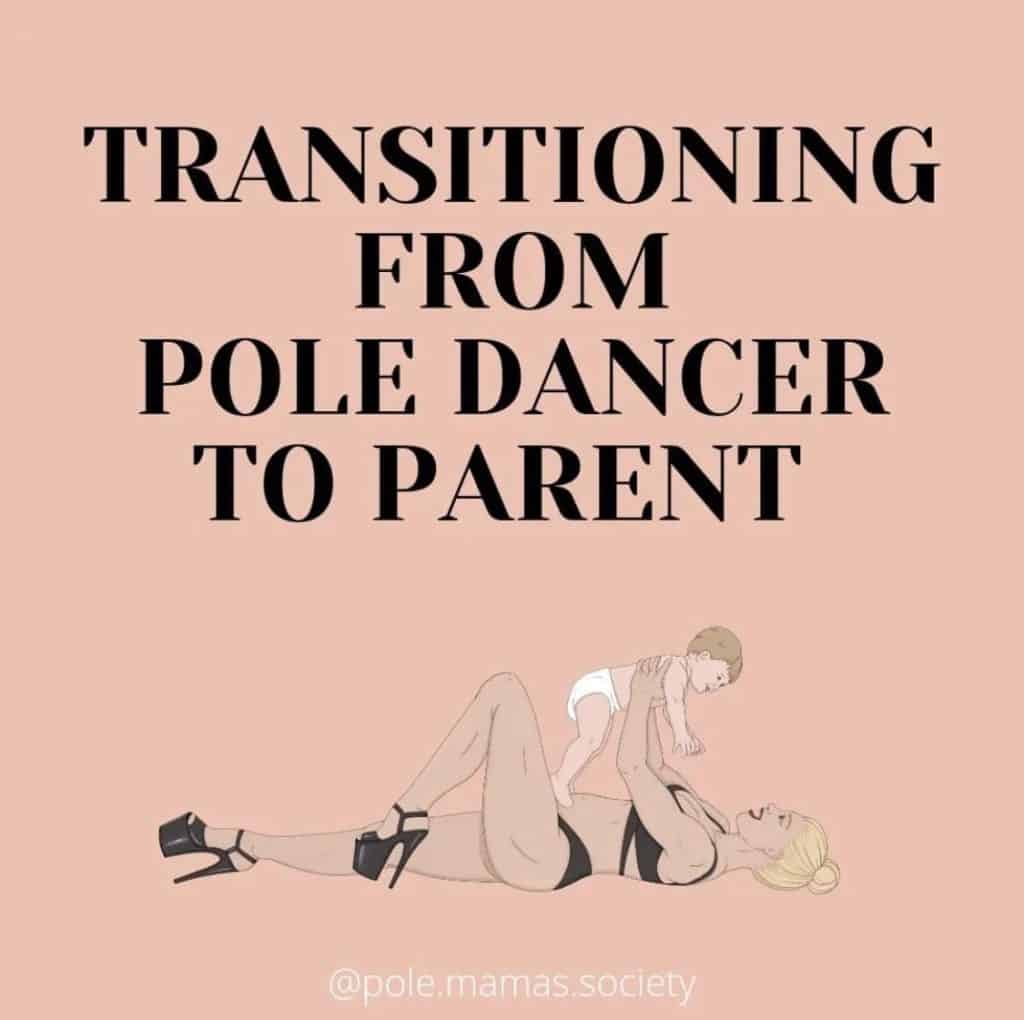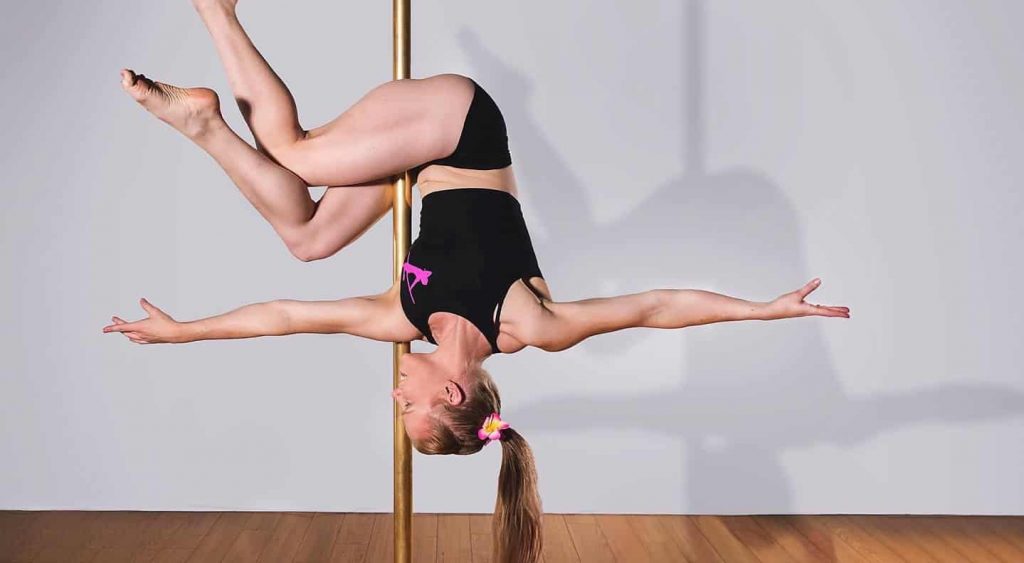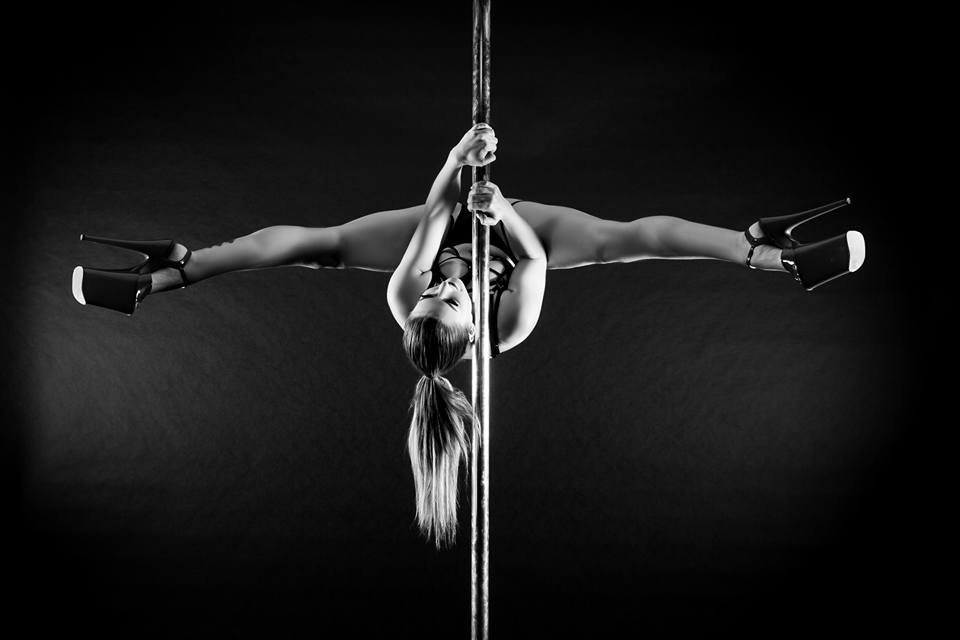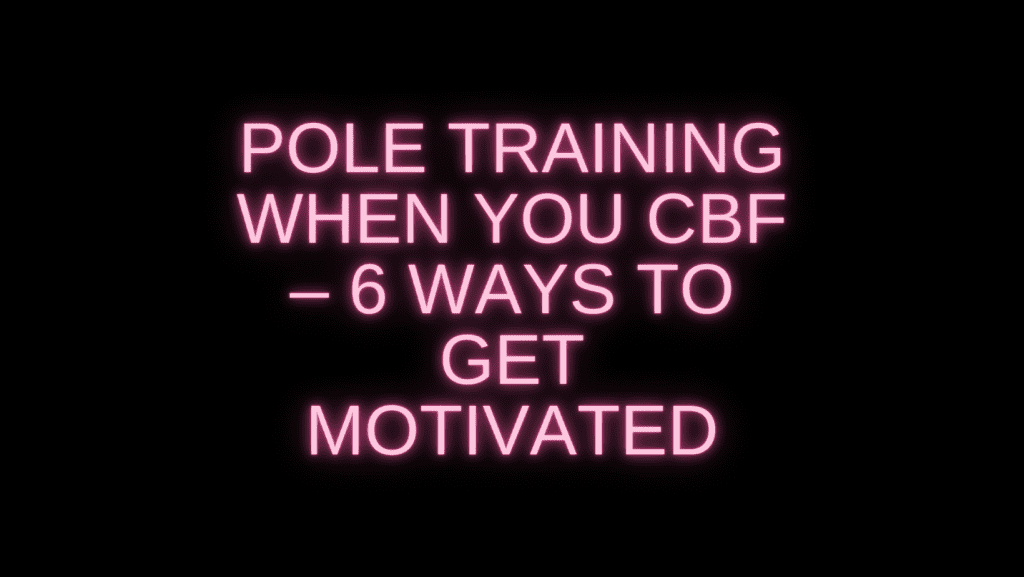In the early days of pole dancing, it was rare to find a spinning pole. Certain locations such as Sydney, Australia, were early pioneers of the apparatus, but if you travelled south of the border to Melbourne, classes on spin were hard to find. These days the situation is more commonly reversed – studios often teach on spin from beginner-level. And while the spinning pole looks magical and allows us to feel like we are flying, it can take some getting used to!
The human body has an amazing capacity to adapt to unusual sensory input – if you’ve ever spent time on a boat you’ll know the strange feeling of hitting solid ground after floating on water. Sailors are said to get their ‘sea legs’, and a similar truth exists for pole dancers getting their ‘spin legs’.
While the process of accommodating to spin pole does occur naturally for some, the experience of being nauseated when getting on the spinning pole can be very off-putting and difficult for many students. If it persists, or is particularly severe, it can be a huge block to progress and may even leave some feeling that pole isn’t for them. The good news is, that by understanding what is causing the problem we can discover ways to overcome it. So you can finally be that magical spin pole unicorn you’ve always dreamed of!
The Vestibular System
The anatomy of the inner-ear, and the mechanism that the body uses to sense (and respond to) motion plays a huge role in the dizziness and/or nausea we feel when using the spinning pole. In very basic terms, this stems from fluid that exists inside the inner-ear, which is part of what’s known as the vestibular system. Movement of the body causes this fluid to shift, which in turn gives messages to the brain. The brain translates this fluid-shift to let you know where your body exists in space. For example it can tell if you are laying down, bending forward, tilting your head to one side, or turning to the right.
In all movements, other parts of the body in conjunction with your vestibular system are sending countless messages to the brain. This completes the picture for the brain to understand exactly what you are physically doing.
What Causes Dizziness?
Imagine turning fast in a circle while holding a glass of water. The water will slosh out one edge of the glass. The fluid inside our inner-ear moves in the same way. When we stop turning, the fluid reverses direction (think of being in a car that accelerates quickly, pushing you back into the seat – and then slams on the brakes, pushing you forward into the seatbelt). This reversal of the fluid sends the message to the brain that we are now turning in the opposite direction. However, because the body is actually still, other sensory signals are telling your brain a different message. This gives the temporary sensation of dizziness until the fluid becomes still.
Motion Sickness and Spin Pole
The phenomenon of dizziness contributes to what we call motion sickness. Motion sickness occurs when the brain is confused by the conflicting sensory information it is receiving from the ears, eyes and body. Motion sickness commonly causes nausea, and is the main reason why some people feel sick (or actually become sick in more extreme situations) when they get on a spinning pole.
How Do I Make It Stop?!
If we apply these principles to spin pole, we can look at motion sickness related to the ‘go-stop’ scenario (where motion sickness is caused by moving from the spinning pole to the static ground), and the ‘go-go’ scenario (where motion sickness is caused during the spinning process itself).
The Go-Stop Remedies
As discussed above, the motion sickness here comes primarily from the fluid movement reversing as you hit solid ground after being in motion in the air.
1/ Unwinding
The best way to settle the fluid quickly (and hence stop the dizziness) is by turning in the opposite direction to the way you were spinning as soon as you hit the floor. You can think of this as ‘unwinding’. One or two rotations should do it, however if you have been going very fast you may need three or four! You will feel the effects of this immediately.
2/ Jump on the spot
Another possibility is jumping up and down as soon as you hit the floor. This will also settle the fluid, although it may not work quite as fast as the ‘unwinding’ reverse-turns.
The Go-Go Remedies
There are also some considerations and adjustments you can make while you are actually on the spinning pole to reduce motion sickness. These all work by minimising the conflicting sensory inputs caused by the constant movement on the pole.
1/ Unfocus your eyes
This can also be thought of as creating an ‘internal gaze’. Take your awareness to your body, into physical sensations and away from your vision. A more extreme way to achieve this is to actually close your eyes, though that may not be for everyone!
2/ Keep your head in a neutral position where possible
Keep your head more or less neutral as you spin. As much as you can, avoid big movements of the head – such as tilting your head back or forward, or towards the shoulders.
General Considerations
Motion sickness related to spin pole will usually involve a combination of both the ‘go-stop’ and the ‘go-go’ factors. The cumulative effect of these ‘overload’ the brain – leading to nausea, sweats, water brash, and even vomiting. However, there are a few other general things you can look at to help minimise any motion sickness during a spin pole session. It’s useful to consider all of these suggestions, because motion sickness is most commonly multifactorial.
1/ Spin slower!
Every pole spins differently, but the speed of your spin will exert more pressure on the inner-ear fluid and make the sensory changes more dramatic. As we grow accustomed to spin pole, the speed will affect us less. But in the beginning a slower spin will minimise motion sickness.
2/ Don’t eat a big meal before class
The combination of a full stomach with all the conflicting sensory information of spinning pole is a big no! Even seasoned spinners may get nauseated from this.
3/ Stabilise your blood sugar
Just as problematic as eating a big/heavy meal, is having nothing in your system to keep your blood sugar stable throughout your training. Have a protein-rich snack an hour or so before class to sustain you through the session. Also make sure you are well-hydrated!
Hot tip: coconut water is full of electrolytes and will replenish hydration quicker than water alone. Grab some on the way to class if you haven’t had much fluid during the day.
4/ Pick a pole near a window or fan
Ventilation can help ameliorate the sensations of motion sickness, so try to grab a pole near some good airflow.
5/ Ginger tablets, and other remedies
For most people, following the above advice will be enough. However, in more extreme cases you could try ginger tablets, or even chopped ginger in your water bottle. There are also wristbands available that stimulate an acupuncture point, and are said to reduce motion sickness.
As a last resort there are pharmacy medicines that can be tried, however you should always make sure you are following the above directions first, even if you decide to go the pharmaceutical route.
Hopefully this has helped you on your journey to spin pole heaven! If you know someone who struggles with motion sickness on spin pole, help spread the love by sending them this blog. And get in touch if our tips have helped you, so we can share your success story. Happy spinning!












